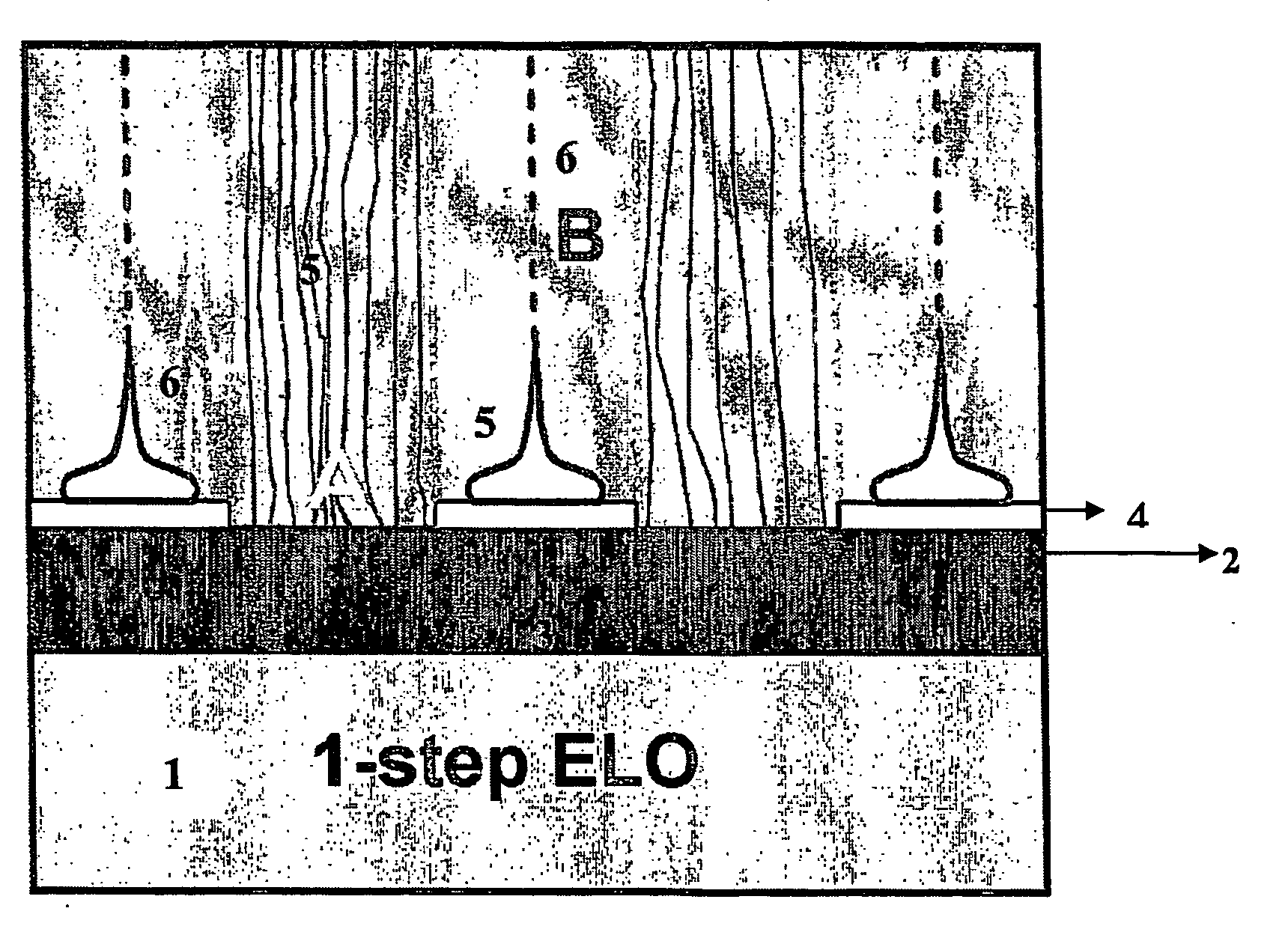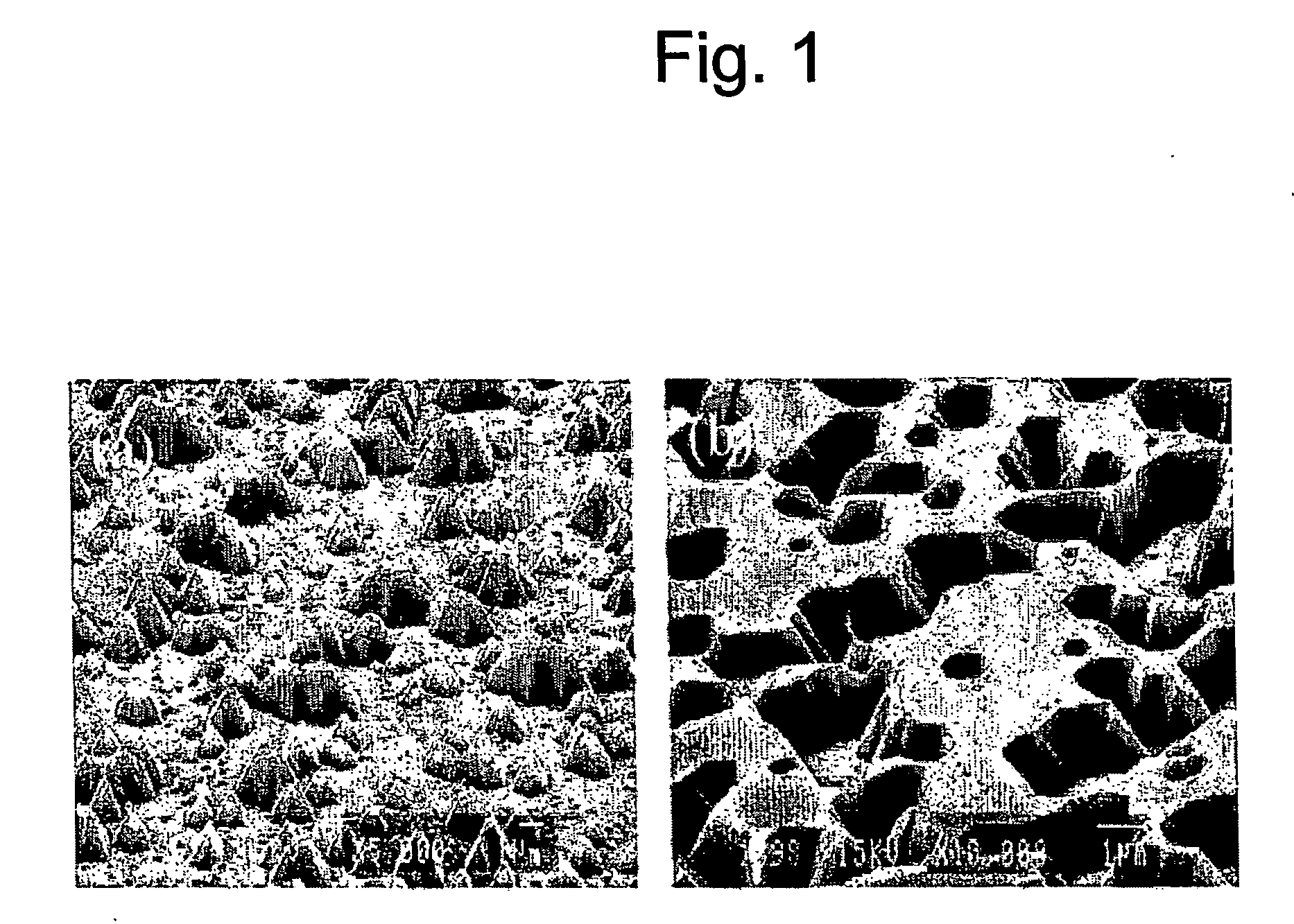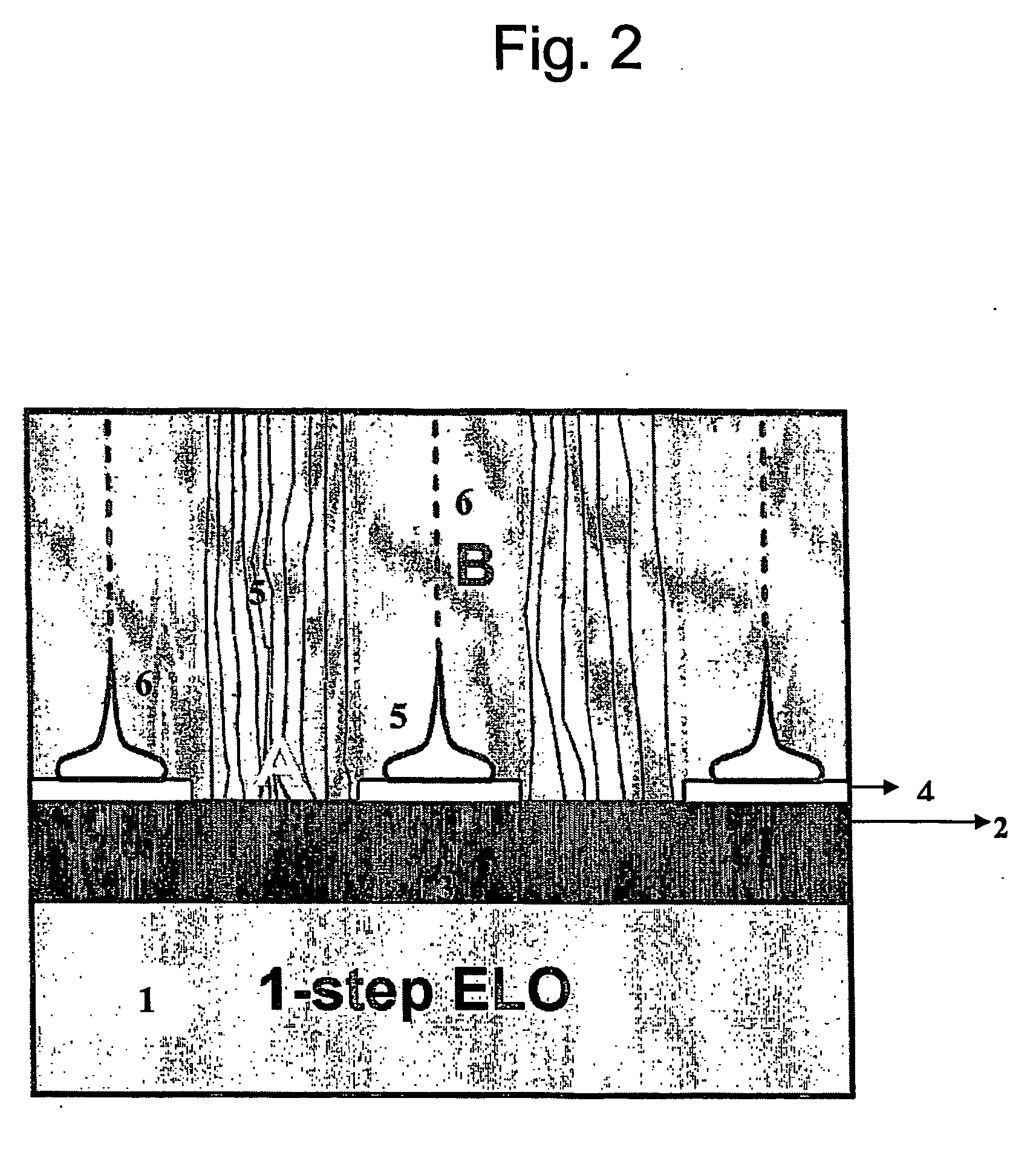Manufacturing gallium nitride substrates by lateral overgrowth through masks and devices fabricated thereof
a technology of gallium nitride and substrate, which is applied in the direction of crystal growth process, polycrystalline material growth, chemically reactive gas growth, etc., can solve the problems of high defect parts, filtering of defects, and complex lds technology of elo
- Summary
- Abstract
- Description
- Claims
- Application Information
AI Technical Summary
Problems solved by technology
Method used
Image
Examples
example 1
A Suitable Epitaxial Growth Reactor is Used for the Metal Organic Vapour Phase Epitaxy.
[0054] [1] Explicitly, a substrate 1, especially (0001) sapphire is used. A very thin film of silicon nitride 2 is formed on the surface of the sapphire, the film being obtained by reaction between NH3 and silane SiH4 for a time short enough to limit the thickness of the film to that of about a few atomic planes.
The operating conditions are the following:
[0055] [2] The gaseous vehicle is a mixture of nitrogen and hydrogen in equal proportions. The ammonia is introduced together with the silane, in a form diluted to 50 ppm in hydrogen. Under these conditions, the typical NH3 and SiH4 reaction time is of the order of 30 seconds.
[0056] The successive steps are monitored by laser reflectometry (LR). After the dielectric layer has been completely formed, a continuous gallium nitride layer having a thickness of 20 to 30 nm is deposited on the dielectric film. The deposition of the GaN layer is mad...
example 2
Shorter or Longer First ELO Process: Void Engineering.
[0062] [1] The example 1 describes a double 2S-ELO GaN in which the two 2S-ELO have basically the same duration. In other modifications of the process the first 2S-ELO could be longer (FIG. 5), in such a way that remaining TDs from the first 2S-ELO starting to be redistributed will be either bent at 90° or stopped by the mask.
[0063] [2] Conversely, the second 2S-ELO can start even before full coalescence, (FIG. 6). In this later modification a void V can be created, and the shape of the void can be tuned from the growing conditions. In FIG. 6, the mask 8 covers partially the (0001) plane and completely the V-Shaped facets. This second alternative of the process described in the example 1 indeed allows controlling the shapes and distributions of voids. Henceforth, this void engineering can be adjusted to favour spontaneous strain induced separation of the upper part 10 from the substrate 1.
[3] Such a process produces GaN with...
example 3
Void Engineering by Mass Transport
[0064] [1] In the 2S-ELO technology, TDs after bending at 90° are propagating parallel to the substrate surface towards the coalescence boundaries. Actually the two laterally overgrowing wings pinch off together to form a coalescence boundary. Eventually a void V is formed at this coalescence boundary (most likely due to reduced supply of active species). Interestingly, three behaviours of TDs are observed. Since TDs must terminate on a free surface, they are observed to end up in the void (TD type 1), bend downwards and end up on the top of the void, TDs type 2, and finally, they could bend one again upwards towards the top of the layer and merge creating a depression, TDs 3. These types 3 TDs are deleterious to the final quality of the layer since they can not be eliminated and they propagate into the device grown on top of the layer. Besides, it has been shown that the shape of the void control the residual stress in ELO layers. [M. Benyoucef, ...
PUM
| Property | Measurement | Unit |
|---|---|---|
| width | aaaaa | aaaaa |
| thickness | aaaaa | aaaaa |
| width | aaaaa | aaaaa |
Abstract
Description
Claims
Application Information
 Login to View More
Login to View More - R&D
- Intellectual Property
- Life Sciences
- Materials
- Tech Scout
- Unparalleled Data Quality
- Higher Quality Content
- 60% Fewer Hallucinations
Browse by: Latest US Patents, China's latest patents, Technical Efficacy Thesaurus, Application Domain, Technology Topic, Popular Technical Reports.
© 2025 PatSnap. All rights reserved.Legal|Privacy policy|Modern Slavery Act Transparency Statement|Sitemap|About US| Contact US: help@patsnap.com



